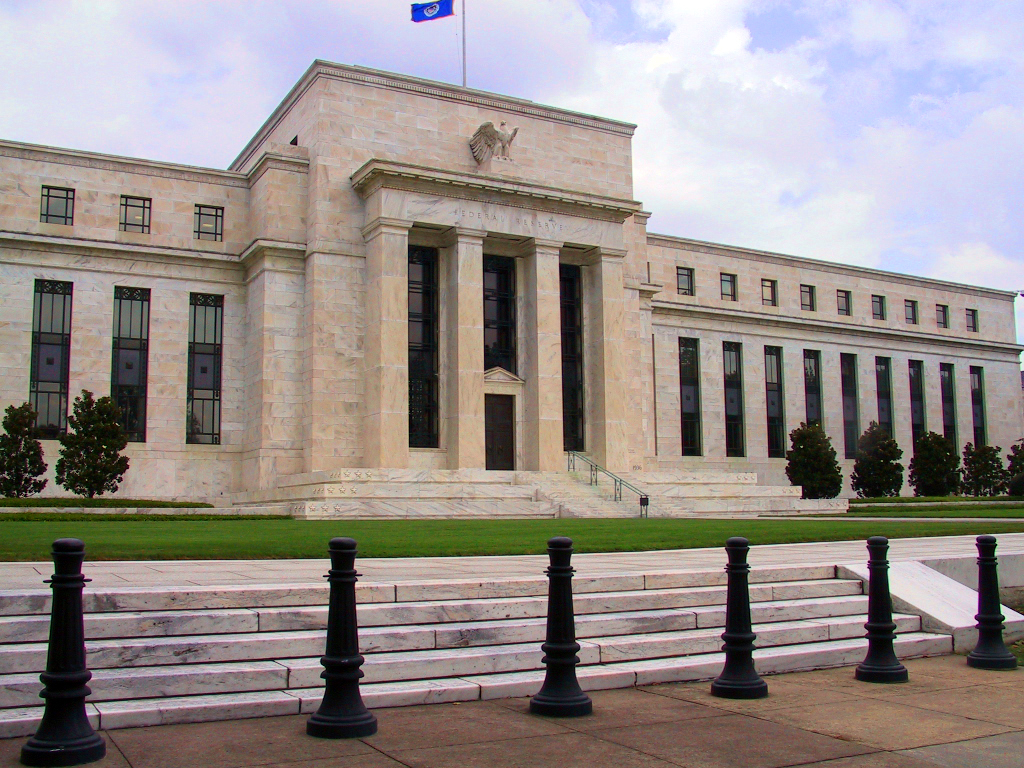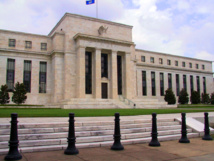Goldman Sachs Group Inc., J.P. Morgan Chase & Co. and Morgan Stanley have been allowed to return profits to shareholders only after adjusting their initial requests to ensure that their capital levels remain above the minimum requirements of Fed, what Federal Reserve's press release shows.
The Fed gave Bank of America Corp. conditional clearance to return profits to shareholders, citing "certain weaknesses", including the ability to measure losses and gains. This allows the bank to temporarily compensate investors, increasing amounts of dividends or repurchase of shares, however, the bank must submit a revised plan to the 30th of September. If the Fed will not be pleased with the progress of the bank, it can freeze the allocation of capital.
Our review of the capital plan helps to ensure that the plans of large banks on the distribution of capital will not harm their ability to continue to lend to businesses and households, even during the period of severe financial stress, - said in a statement Fed Governor Daniel Tarullo, who oversees the regulation of the Central Bank.
This year test, which determines whether the banks will be able to continue lending during periods of severe economic stress directly affected trading on Wall Street, and it appears that this factor explains the difficulties faced by large banks during the passing. "Very unfavorable" scenario in 2015 included the assumption of corporate defaults, a sharp decline in stock prices and a stronger market volatility than in previous years, and higher losses for banks that are active in the capital markets, including the sale and purchase of shares and debt tools, the Fed pointed out. And Goldman, and Morgan, and J.P. Morgan have large trading operations.
Citigroup Inc. was approved by the Fed in its capital plan, which was a great victory for the general director Michael Corbat, who made taking the test with a "reasonable size of return of capital" the main purpose of Citi since 2014 the bank has not passed the stress test for the second time in three years . Corbat said that he would resign if this year the bank have not passed the test again.
Wall Street’s problems with stress tests are likely to cause criticism about what the Fed’s process is too opaque and is aimed at finding a "bottleneck" in the banks rather than to ensure their ability to accumulate sufficient capital to absorb losses.
Fed officials say that they allow the banks to adjust their plans before reaching a final verdict.
J.P. Morgan, Goldman Sachs and Morgan Stanley have changed their capital plans after receiving the preliminary forecasts from the Fed on its capital adequacy ratios last week. These changes have allowed to maintain their capital adequacy ratios above the minimum requirements of the Fed, but at the time it was not known whether these changes reduce the total volume of payments to shareholders. Fed’s first part of the hypothetical scenario has been exceptionally challenging for commercial banks' balance sheets this year, so that they could simply defer payments to shareholders at a later date in 2015 or 2016 to fulfill the minimum requirements for the tests.
After adjusting the capital plans Fed decided that 31 banks are adequately capitalized and able to continue lending during the shock on the market - the first time since the start of the test in 2009 none of the banks will not fall below the minimum.
Fed rejected the capital plans of US units Deutsche Bank AG and Banco Santander SA because of the "quality" shortcomings, including the ability to model losses and identify risks. These two banks are required to submit revised plans and suspend any increase in the dividend to the parent companies and other shareholders, but may continue to pay dividends at last year's level.
Deutsche Bank’s plan has held the stress test for the first time this year and was rejected because of "numerous and significant deficiencies" in several areas of the capital planning process, including the bank's ability to identify risks, Fed said.
Santander failed the stress test second year in a row because of "widespread and critical deficiencies" in planning procedures, Fed pointed. Fed’s description of deficiencies the bank is identical to last year and, among other things, indicates a problem with the internal control and risk management.
Investors are putting pressure on the major banks, demanding to improve shareholder returns, which have worsened since the crisis. Analysts and investors discussed the idea that some banks will cost more if they are divided into parts. The bank's management rejected this assumption.
The Fed gave Bank of America Corp. conditional clearance to return profits to shareholders, citing "certain weaknesses", including the ability to measure losses and gains. This allows the bank to temporarily compensate investors, increasing amounts of dividends or repurchase of shares, however, the bank must submit a revised plan to the 30th of September. If the Fed will not be pleased with the progress of the bank, it can freeze the allocation of capital.
Our review of the capital plan helps to ensure that the plans of large banks on the distribution of capital will not harm their ability to continue to lend to businesses and households, even during the period of severe financial stress, - said in a statement Fed Governor Daniel Tarullo, who oversees the regulation of the Central Bank.
This year test, which determines whether the banks will be able to continue lending during periods of severe economic stress directly affected trading on Wall Street, and it appears that this factor explains the difficulties faced by large banks during the passing. "Very unfavorable" scenario in 2015 included the assumption of corporate defaults, a sharp decline in stock prices and a stronger market volatility than in previous years, and higher losses for banks that are active in the capital markets, including the sale and purchase of shares and debt tools, the Fed pointed out. And Goldman, and Morgan, and J.P. Morgan have large trading operations.
Citigroup Inc. was approved by the Fed in its capital plan, which was a great victory for the general director Michael Corbat, who made taking the test with a "reasonable size of return of capital" the main purpose of Citi since 2014 the bank has not passed the stress test for the second time in three years . Corbat said that he would resign if this year the bank have not passed the test again.
Wall Street’s problems with stress tests are likely to cause criticism about what the Fed’s process is too opaque and is aimed at finding a "bottleneck" in the banks rather than to ensure their ability to accumulate sufficient capital to absorb losses.
Fed officials say that they allow the banks to adjust their plans before reaching a final verdict.
J.P. Morgan, Goldman Sachs and Morgan Stanley have changed their capital plans after receiving the preliminary forecasts from the Fed on its capital adequacy ratios last week. These changes have allowed to maintain their capital adequacy ratios above the minimum requirements of the Fed, but at the time it was not known whether these changes reduce the total volume of payments to shareholders. Fed’s first part of the hypothetical scenario has been exceptionally challenging for commercial banks' balance sheets this year, so that they could simply defer payments to shareholders at a later date in 2015 or 2016 to fulfill the minimum requirements for the tests.
After adjusting the capital plans Fed decided that 31 banks are adequately capitalized and able to continue lending during the shock on the market - the first time since the start of the test in 2009 none of the banks will not fall below the minimum.
Fed rejected the capital plans of US units Deutsche Bank AG and Banco Santander SA because of the "quality" shortcomings, including the ability to model losses and identify risks. These two banks are required to submit revised plans and suspend any increase in the dividend to the parent companies and other shareholders, but may continue to pay dividends at last year's level.
Deutsche Bank’s plan has held the stress test for the first time this year and was rejected because of "numerous and significant deficiencies" in several areas of the capital planning process, including the bank's ability to identify risks, Fed said.
Santander failed the stress test second year in a row because of "widespread and critical deficiencies" in planning procedures, Fed pointed. Fed’s description of deficiencies the bank is identical to last year and, among other things, indicates a problem with the internal control and risk management.
Investors are putting pressure on the major banks, demanding to improve shareholder returns, which have worsened since the crisis. Analysts and investors discussed the idea that some banks will cost more if they are divided into parts. The bank's management rejected this assumption.



















